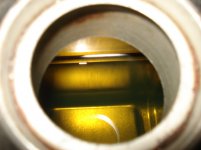- Joined
- Jan 24, 2002
- Messages
- 229
- Location
- Binghamton, NY
- Corvette
- 1981Dark Blue Metallic & 2004 conv. magnetic red
I have been using 93 octane with 10% ethenol and recently found 3 stations in my area that sells 91 octane that is ethenol free. Been using it in my truck and the milage has improved almost 3 MPG so tried it in the both of the vettes and they seem to run better without the stinky exhaust fumes and moisture dripping out of the tailpipe.
Anyone else doing the same and what are the results?
Chuck
Anyone else doing the same and what are the results?
Chuck


 otfl
otfl



